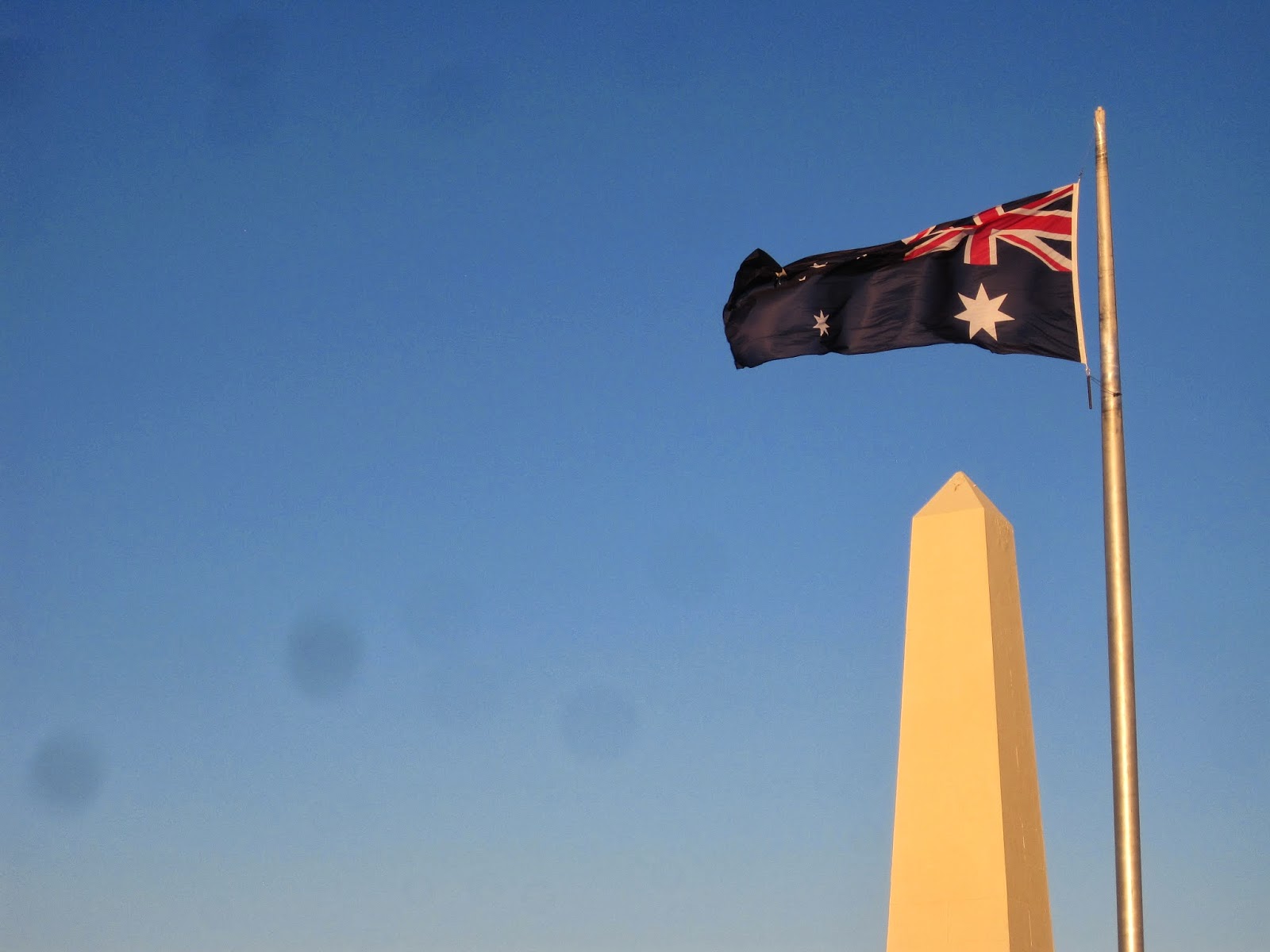Alice Springs sits smack dab in the middle of Australia - right in the middle of the "Outback" and the deserts that make up most of Australia. Population 28K and believe it or not, that makes it the third largest city in the Northern Territory. That tells you just how sparsely populated and remote most of the Northern Territory of Australia is. Most locals call Alice Springs "the Alice" or just "Alice". Below is a sign in the center of town. It gives distances to the nearest places inside of Australia. When you are 270 kilometers from a place called Kulgera and that is your nearest point of relief, well let's just say you have reached the end of the earth.
K and I spent an evening and morning here awaiting our flight to Uluru. Admittedly, it is probably not the type of place you would want to stay unless you had to in order to see one of the natural wonders of the southern hemisphere (Uluru). Having said that, it was a nice stop and allowed us to finally see some of the Aboriginal peoples (and their culture through art works) of this great country. Although it is sad to see the poverty and living conditions of many of the original Australian natives - much like the natives of America, they are largely poor and make up a large indigent population of Alice Springs.
We flew directly from Perth to Alice Springs - about a 3 hour flight. As I mentioned, Alice Springs sits almost perfectly as the center point in the country so it would be like flying from San Diego or LA to St. Louis (or NY to St. Louis in the other direction). Once you leave Perth and are in the air about 15 minutes, you realize there is nothing down there. I mean nothing. Except for natural landmarks, there are hardly any roads and towns to speak of. The further inland you get, the fewer man made landmarks you see from your seat in the plane. I tried to capture the Outback from my plane seat. I am not sure you can see how empty it is, but I implore you to try to find any road or something looking man made in the landscape. This is what you see for hour after hour when traveling to Alice Springs.
Except for an occasional dried salt lake bed, you see very little.
That is why something like Uluru and the MacDonnell Ranges stand out in this country. You can see them from miles away and they are a welcome site against all the red desert passed for miles.
Back to Alice Springs. Alice Springs is not known for much. It served as a telegraph station and mid way point for crossing this great big country. Early crossings were done by imported Afghan camels. The "Ghan" highway eventually became a train route, but many of the camels still roam the countr side freely (as we were told - making a bit of a mess of the indigenous flora/fauna).
Because of its remoteness, location, and clear shots to the sky, it has been a great satellite monitoring base. Otherwise, it is tourism that drives Alice Springs as it is a kick off point to Uluru and several other Outback nature locations.
K and I did the two things you can do in Alice Springs (apart from departing for one of those tourist destinations). We wandered the town's main shopping street and visited ANZAC Hill (commemorating WW I and other war veterans) which overlooks the entire city. Here are a couple of pictures from ANZAC Hill. As you can see, Alice Springs is not a huge metropolis. It is, however, in the valley of the MacDonnell Ranges.

We enjoyed a beautiful sunset from the hill.
The other thing to do in "The Alice" is shop at the Todd Mall (street where the shopping is). Almost 20% of Alice Springs is native Aboriginal peoples. This is far higher than the 1.5% across the rest of the country. Therefore Alice is the center for Aboriginal art, and K obliged their industry with a very unique and nice painting from an up and coming artist from the area purchased on the Todd Mall.
That pretty much wrapped up our visit of the end of the world. It was very warm and dry. There wasn't a cloud in sight. Knowing how rough a winter it has been back in the US, it was nice to enjoy such beautiful weather. The next morning, we were on to Uluru (formerly Ayers Rock). My next post will tell you all about it.











No comments:
Post a Comment